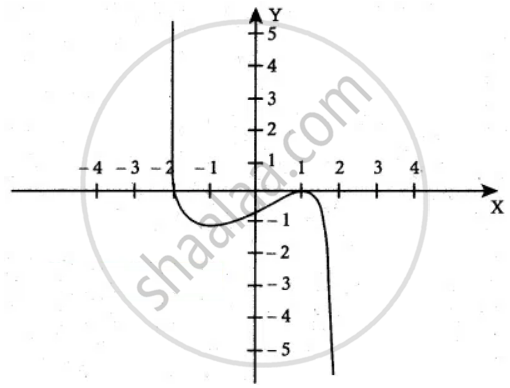Advertisements
Advertisements
प्रश्न
Sketch the graphs of the following functions
y = `- 1/3 (x^3 - 3x + 2)`
उत्तर

Factorizing we get
y = `- 1/3 (x - 1)^2 (x - 2)` = f(x)
The domain and the range of the given function f(x) are the entire real line.
Putting y = 0
We get x = 1, 1, – 2.
Hence the x-intercepts are (1, 0) and (– 2, 0) and by putting x = 0.
We get y = `- 2/3`.
Therefore, the y-intercept is `(0, - 2/3)`
f'(x) = f'(x)
= `((3x^2 - 3))/3`
= – (x2 – 1)
= 1 – x2
f'(x) = 0
⇒ 1 – x2 = 0
⇒ x = ± 1
The critical points of the curve occur at x = ± 1 .
f”(x) = – 2x
f”(1) = – 2 < 0,
∴ f(x) is maximum at x = 1 and the local maximum is f(1) = 0
f”(– 1) = 2 > 0,
∴ f(x) is minimum at x = – 1 and the local minimum is f(– 1) = `- 4/3`
f”(x) = – 2x < 0 ∀ x > 0
∴ The function is concave downward in the positive real line.
f”(x) = 2x > 0 ∀ x < 0
∴ The function is concave upward in the negative real line.
Since f”(x) = 0 at x = 0 and f”(x) changes its sign when passing through x = 0.
Hence the point of inflection is `(0, - 2/3)`
The curve has no asymptotes.
